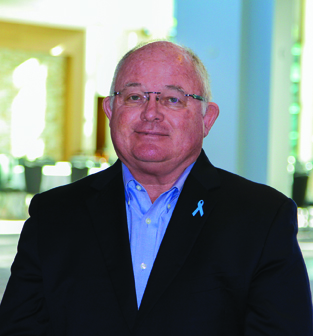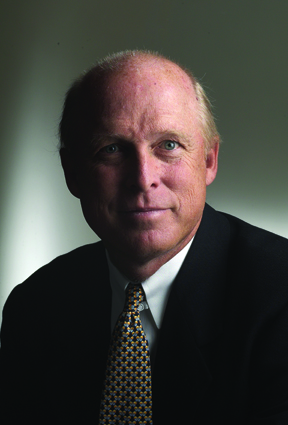 |
 |
 |
Marketing A survival guide for the local agent A major study shows stark challenges for independent agents; two top consultants tell what it takes
By Elisabeth Boone, CPCU "When the going gets tough, the tough get going." Like many once hot catchphrases, this one has lost its luster and become just one more tired cliché. Within every cliché, however, resides a nugget of truth, and this one is no exception. For independent agents, the going these days is extremely tough. It's not just the direct writers, the Internet shoppers, the shrinking commissions and profit margins, although each of these by itself can keep even the most successful agent awake at night. The entire system of insurance distribution is undergoing a monumental transformation, and at stake is the future of the traditional independent agent. In a study conducted earlier this year, the Financial Services Practice of management consulting firm McKinsey & Company, Inc., found significant changes in the way insurers view the role of independent agents. The results of the study are presented in a report titled Agents of the Future: The Evolution of Property and Casualty Insurance Distribution. Over the last decade, the McKinsey analysts observe, the traditional agent-carrier relationship has been evolving in response to both market forces and technological advances. Sophisticated techniques for predictive modeling are allowing carriers to rely less on the underwriting judgment of agents, and millions of Americans are buying insurance online. What's more, today's consumers expect to interact electronically with their insurance provider on their own schedule, not just during traditional business hours. "There are signs that the economics of the traditional agent model are beginning to unravel. Carriers are interacting more directly with customers, at lower cost and often with more consistent service levels. Many carriers are asking themselves what role agents should play in the system," the report says. Other key factors the report cites are the commoditization of personal auto insurance; the rise of multi-channel marketing; the ascendance of the carrier brand, and pressure on commissions for agents who don't add value to the insurance transaction. Although the McKinsey report does not foresee the demise of the independent agency system, it depicts a vastly altered playing field for local agents and defines the unique value they must bring to the insurance transaction. "Three core capabilities will serve as the foundation for agents as they seek to thrive in today's increasingly competitive environment," the report says. They are (1) defining and reaching a target market; (2) delivering deep, tailored expertise; and (3) achieving operational efficiency and scale through organic growth, acquisitions, or forming agency clusters. Beyond survival Like other independent business owners, agents don't want merely to survive; they want to build, grow, and prosper. Given the daunting challenges they face, what can agents do to secure a meaningful role in the evolving insurance distribution system? Two top agency consultants were invited to answer that question during a webinar conducted by George Nordhaus, founder and chairman of Agencies Online and also founder of Insurance Marketing and Management Services. Agencies Online posted the full webinar on August 22.
Scott Addis, CPCU, CRA, is president and chief executive officer of The Addis Group, a risk management consultant and insurance brokerage, and of Addis Intellectual Capital LLC, a training and coaching firm he founded in 2007. Addis writes the "Beyond Insurance" column for Rough Notes and serves on the magazine's Agent Editorial Advisory Board. Roger Sitkins is founder and chairman of Sitkins International, a private client group of top independent agencies in the United States, Canada, and Latin America. He began his consulting career in 1980 after operating a successful agency in Michigan, and his "Winning Strategies" column appears each month in Rough Notes. Key excerpts from the webinar follow. Nordhaus: There's been a gradual shift in the value that customers, both individuals and small business owners, place on many activities traditionally performed by local agents. That's increasingly calling into question the role that agents will play in the future. What's your overall reaction to the McKinsey report's findings and conclusions? Addis: The McKinsey report is in many ways very much on target, but I think the analysts may have underestimated the resolve and capabilities of the local agent. I'd like to point out three things about local agents. Number one, they're entrepreneurial. Number two, they have very deep roots in their communities, and they know how to develop intimate relationships. Third, and most important, local agents have garnered the trust and respect of those they serve. As a coach and mentor to agencies all over the country, I believe that if agents just do three simple things, they can expand and grow in tremendous ways. Repackage, reposition, and develop a unique process that focuses on creating intimacy in the customer experience. Obviously the issue here is commoditization in auto, homeowners, and small commercial. I strongly believe that commoditization creates a huge opportunity for agents who are able to stand out in a crowded marketplace.
Sitkins: For me, the biggest takeaway from the study is that the role of the independent agent must continue to change. I think the traditional agent is still going to do okay. But the problem is, if you're traditional, you're like everyone else; you haven't repackaged, as Scott mentioned, so you have a ton of competition. I want agents to move into a more nontraditional approach, where they focus on risk and get away from commoditization. It's about understanding that strategic risk, hazard risk, and business risk. How do you deal with those risks in a way that differentiates you from your competition? I think one of the key conclusions of the McKinsey report was that agents must become professionally managed so they're not just selling insurance. I think this report creates tremendous opportunities for independent agents, and those who respond will do well whereas those who don't are going to be challenged. Nordhaus: The McKinsey report identifies three core capabilities that agents must possess. First, define and reach a target market; second, acquire and provide clients deep expertise and tailored solutions; and third, achieve operational efficiency and scale by using technology, acquiring or merging with other agencies, expanding geographically, and searching beyond P&C products for new sources of revenue. Sitkins: I agree with those points to a degree. Clearly agents must define their markets; if everyone in your marketplace is a potential client, then you're pretty scattered. Agents can do two things. First, identify what an ideal client looks like for them, and then target prospects who fit that profile. Second, start to specialize because, in any professional services organization, specialists always make more money than general practitioners. Also, some agents are using digital technology in exciting ways. You can call on a prospect and do a risk survey on your iPad or iPhone, then send it directly into the agency automation system. Addis: I certainly agree with McKinsey's assertion that agents will benefit from taking a target market approach and using digital technology to communicate with customers. But I believe that there's a survival skill that's much more basic and powerful, and that agents need to develop this skill even before they think about target marketing. That skill is producer and agency transformation into a new mindset. To survive and thrive in an increasingly commoditized world, agency leaders must teach their people how to add value. The CEO, the CFO, the HR director, and the head of household are juggling more responsibilities than ever before. They don't have the time or often the ability to identify the issues that face their business or family. So agency leadership must move beyond insurance to the world of risk mitigation. They must see themselves not as agents and brokers but as risk strategists, 365 days a year. They must get inside the business or the family unit to consult, diagnose, and treat. Nordhaus: What about the report's recommendations for how independent agencies can achieve operational efficiency and scale? Sitkins: First of all, I think agents have to do more with less. When we analyze agency operations and help agencies with planning, we often see that they're stuck with way too many clients who are paying them way too little money because they're not targeting the right prospects. When we do an 80/20 analysis of an agency, we see that on average, the bottom 50% of their clients generate less than 10% of their revenue, and they actually create a loss for the agency. Agents need to think about working with fewer clients who pay the agency more money. They also need to look at the number of carriers they represent. From an efficiency perspective, agents must do everything they can to drive one of the most important critical indicators for an agency: revenue per employee. How can agencies do this? Some of the smaller agencies may have to band together. There are some excellent aggregators, and I've seen many agencies that go that route not only survive but thrive. However they do it, agencies absolutely have to have growth. If you're not growing, you're going backwards. Addis: I think operational efficiency comes from knowing who you are, whom you serve, what you bring to the marketplace, what your capabilities are, and what they aren't. I'll use The Addis Group as a model: Since we were founded in 1990, our revenue per employee has averaged close to $300,000. Yes, technology increases efficiency. However, I think it's dedication to the customer experience, coupled with a unique process, a prospect criteria filter, that drives efficiency. The experience of an organization drives retention; energized clients drive referrals, and referrals drive hit ratio. A high hit ratio breeds confidence and creates energy and passion. As for aggregators, Beyond Insurance has worked with some excellent ones. While market access and profit sharing are obvious reasons to form and join a cluster, I can tell you that each of these organizations is now keenly focused on providing resources and capabilities in other areas that foster growth, profitability, and value. They have many capabilities, but I think it's the way they're sharing and innovating that's taking them to a whole new level. Nordhaus: The McKinsey report points out that, although the traditional local agent model is not well positioned to achieve operating efficiency and scale, several new models are already finding success. The report describes six models: (1) traditional commercial lines agents that are large and professionally run; (2) large multi-line agents with a balanced product mix of personal lines, commercial lines, and life insurance; (3) a leveraged or lower-cost model that shares characteristics with existing aggregators, clusters, or managing general agent models; (4) teams of specialized agents that share leads, clients, revenue, expenses, and support similar to wealth management consultants; (5) small, niche, expertise-driven agents that target specific personal and commercial segments; and (6) small virtual agents that spend most of their time on sales rather than service and interact remotely with clients rather than maintaining a physical space. The report points out that some of these models resemble existing agency structures, whereas others completely redefine what it means to be an agency. Sitkins: As we've commented, the traditional agency that looks like everybody else has tough competition, and the focus needs to be on risk rather than on products. As Scott and I have observed, when it comes to risk, the winners will be those who differentiate themselves by telling clients and prospects: "Insurance is one of the solutions we provide, but it's not the only solution. We deal with your total risk." Traditional agencies will continue to do things the old way, and we describe that as "Look, Copy, Quote, and Pray." That's the kind of behavior that causes consumers to tell us: "You guys are all the same." Agents who use the traditional approach efficiently may do fine, but they do have to redefine where they're going in that model.
Addis: I suggest that there's no perfect "agency model of the future." I'd like to focus on five characteristics that I think must bepresent no matter what model an agency adopts. Number one is servant leadership: understanding that our job as agency leaders is a passion to serve our customer, our employees, our community, and our carrier partners. Number two is innovation and the ability to differentiate yourself in the marketplace. Number three: a unique process that defines and distinguishes your agency from competitors. Number four: a continual focus on the customer experience with an emphasis on how you stay intimately connected with the customer. Finally is the ability to get inside the business or family unit to identify, measure, prioritize, and mitigate risk. Nordhaus: In addition to noting a decline in the number of traditional local agents, the McKinsey report points to pressure on agent commissions caused by carriers' need to allocate resources efficiently in a more complex distribution landscape. "Inevitably," the report says, "carriers will need to consider rewarding agents more directly for those efforts that uniquely add value (such as retention and cross-selling)." Sitkins: Some carriers are doing a good job with their service centers, and agents are not necessarily changing their business model when they put a client in there. I recently had conversations with the heads of two major service centers in the P-C business, and they were very revealing. I asked them what their number one challenge was. They said it's getting agents to change once they put customers in the service center. Both people said that over 50% of incoming calls to the service centers were from agency CSRs calling on behalf of a client. So agencies place their clients in the service center, but they still deal with their service issues. That doesn't make any sense to me. If you're going to go to the service center, let the center provide the service. Everyone I've talked to assures me that their retention is higher on business that's in the service center rather than with the agency. Certainly there's going to be pressure on commission levels if an agency is simply a pass-through middleman that does nothing but take risk from the client and transfer it to the insurer. If that's all they do, they'll be paid accordingly. The agencies that can add value to the transaction, that can help the client deal with risk and make the risk more attractive to the insurance market, will be paid more. Nordhaus: The report describes the evolution of the agency channel as both a challenge and an opportunity for carriers, and it presents key questions for carrier leadership to consider: • Which of our current and target policyholder segments value agents? • How do agencies add value for our target segments today? What unique services can they offer now and in the future? Where do they need to excel? • Are our current agents positioned to succeed in this new environment? Which agent segments should we support and help grow? Does the overall agent network need to change? • How should we work with our agents to support them as they evolve? • What tools, systems, capabilities, and organizational changes are needed to ensure success? • How can we reward agents for the value-added services they provide and remain competitive on price? • How should we monitor and stay abreast of the challenge (or opportunity) of direct distribution and price-driven sales in homeowners and small commercial? Let's look at these issues from the local agent's perspective. Addis: I'm honored to do coaching and training for a number of leading carriers, and their people are saying every single day: "How can we make our distributors more successful?" But they must pick and choose who their distribution partners are going to be. As agents and brokers, we have to position ourselves to be key members of the distribution channel. Sitkins: The 80/20 rule works for carriers as well as agents. The average carrier is getting 80% of its distribution from 20% of its agents. Those are the agents they're going to partner with. They're going to outsource some tasks to companies like Scott's and mine, and they're going to find ways to help their better agents make the transition. That's why some carriers continue to develop partnership-level agencies. They do more for these agencies because they have to find ways to get more distribution from their representatives. For example, The Hanover has done a tremendous job with its small commercial portal. It provides tools to help the agent identify the appetite of the carrier and how it matches with the agency. All of their support materials are about adding more value to the risk transfer mechanism. In the agency business, as in business overall, we deal with two things: tools and behaviors. We believe that the tools are the responsibility of the agency and the carriers it represents. The behaviors are the sole responsibility of the producer who is in front of the client and the service person who helps the client. Agencies must understand that they can have great tools, but they still have to manage behaviors, and they can tie it all together with great carrier relationships. Then they outperform the marketplace. Addis: There must be an enhanced alignment between the carrier and the agency or brokerage. It's like a marriage; it's not perfect, and you have to work at it. For every carrier it represents, the agency or brokerage must truly understand the key characteristics of that carrier: what resources it can provide, what makes it unique in the marketplace. The carrier must go through the same process for every agency that represents it.
Nordhaus: What about agency-company planning? Sitkins: When agencies have their companies come in and plan, the average visit consists of the carrier rep saying, "All right, we need another half million in business from you next year," and the agent saying, "Okay, we'll give it to you." Great! They shake hands and go their separate ways. The more carriers I interview, the more I find out that the percentage of agencies that actually hit their plan numbers is really low. Even at the partnership level it's less than 50%, and sometimes closer to 40%. Most agency planning is just about numbers; it's not about succession or helping the agency grow. On the other hand, some carriers are doing phenomenal reviews with their agencies, aimed at understanding their book of business. The Hanover has a great program called Book of Business Optimizer. They really understand what's happening in an agent's book, and they ask each agent: "How can we help you grow?" They look for revenue opportunities. The carriers have only so much in terms of resources, and they're going to go to those agents who provide the most effective distribution and have very high closing ratios. Nordhaus: Carriers are taking a hard look at their distribution systems and facing some major challenges, including the role of the local agent. What can agents do in this situation? Addis: I think all we can ask is that the carriers be very open and direct with us. As carriers make decisions about their distribution force, all we can say is: "We are valued partners. We may not want to hear it, but please let us know what your distribution strategy is." Some carriers are choosing to remain 100% committed to independent agents; others are looking at other distribution channels. As agents, we need to understand their plan and their strategy so we can act effectively, especially with auto, homeowners, and small commercial. Sitkins: I agree with Scott. Some carriers have an absolute commitment to the independent agent. Here again, I think the key is partnership. Agents who continue to sell on price only will live by the sword and die by the sword, and this won't help to slow the trend toward commoditization. With our agents, we emphasize the importance of having only full-time clients. I'm amazed that over 60% of personal lines customers still have only one policy with their agency, which means that their agents are not rounding out accounts and bundling coverages to help the client save money. Nordhaus: Let's explore your overall conclusions about the McKinsey report. Sitkins: There is a transformation going on, and if agents just keep focusing on price and don't think about risk, they're in trouble. We tell our agencies and their producers: "E&O has nothing to do with the size of the risk." A small account can file an E&O claim. We owe it to our clients to do a great job of dealing with their overall risk. It's about providing a value proposition that your competition is not offering. What is your unique selling proposition? As the transformation plays out, it will be essential to specialize. And you, as an agency owner, need to understand that eventually you're going to leave the business, so it's also about planning for perpetuation. There are two kinds of perpetuation: financial and leadership. Local agents face a lot of issues. But this is a great business, so don't sit on the sidelines watching what others do. Grab hold of your agency and make something different happen. Addis: When it comes to selling on price, I believe we need to do that—but we have to sell on a different kind of price. In this version of PRICE, P stands for Profit, R for Relationships that are deep and of long standing, I for Intellectual capital, C for Creativity, and Energy to serve the client. The road ahead As the McKinsey report has gained wide circulation throughout the property/casualty industry, it has drawn fire from some who decry its conclusions and praise from others who are grateful to McKinsey's analysts for "telling it like it is." Whatever a given individual may think of it, the report is spurring the kind of conversations that influence the shape and pace of big changes in the property/casualty distribution system.
|
|||||||||
| |||||||||
| ©The Rough Notes Company. No part of this publication may be reproduced, translated, stored in a database or retrieval system, or transmitted in any form by electronic, mechanical, photocopying, recording, or by other means, except as expressly permitted by the publisher. For permission contact Samuel W. Berman. |



